26 tricks shops use to make you spend MORE
Clever marketing tricks that make you spend

Dmitry Kalinovsky/Shutterstock
Ever wandered into a store to buy two things, and walked out with 10? That's because every aspect of the shopping experience – from shop layout to product placement and even the colour of signs – has been cleverly engineered to make you spend more money.
Read on to see 26 ways shops trick us into parting with more of our hard-earned cash.
Fancy packaging...

mnimage/Shutterstock
Research from Innovation Packaging London has found that the way a product looks can influence our senses, and we're paying a lot more as a result. According to a study of 100 volunteers, chocolates eaten from a luxury box were reported to be 14% tastier than the same chocolates if they came from a cheaper-looking one.
...and fancy labels
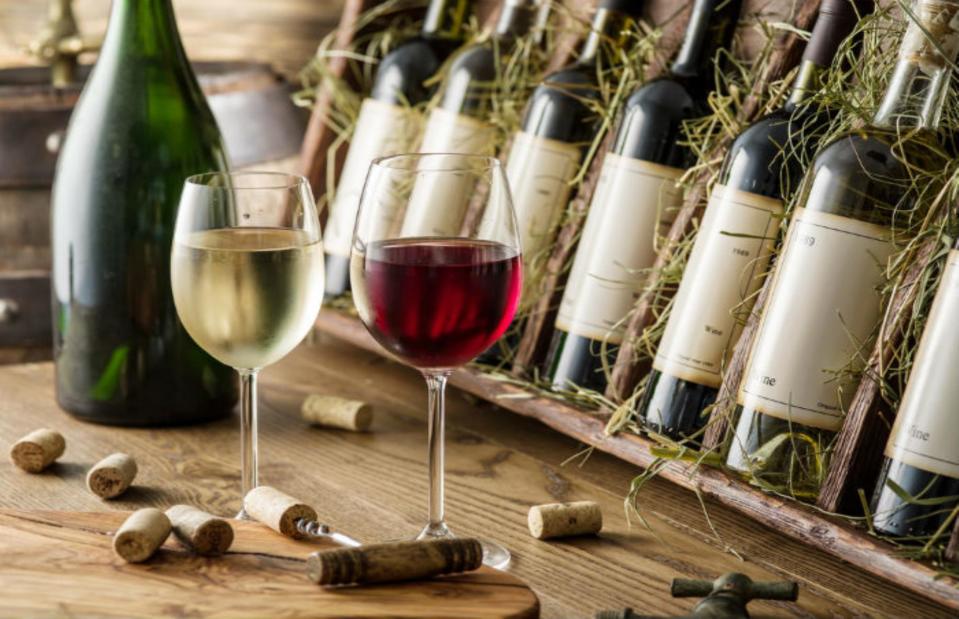
Valentyn Volkov/Shutterstock
Similarly, a bottle of wine with a slick label tasted 53% smoother than the same wine with a standard label. Identical products in fancier packaging were deemed to be 35% better on average, with shoppers willing to pay up to three times more.
Playing music
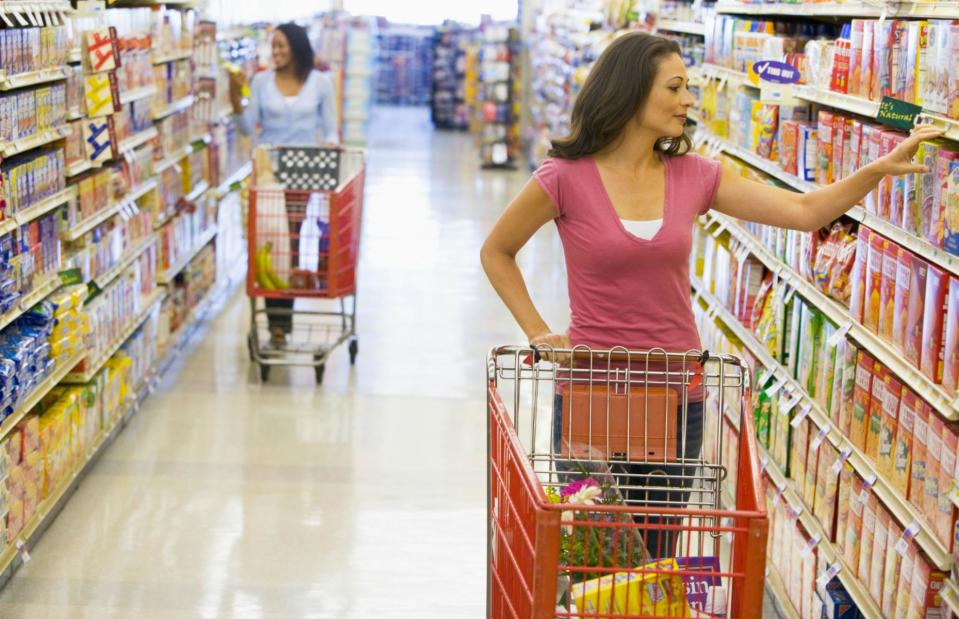
Monkey Business Images/Shutterstock
Playing slow music encourages shoppers to slow their browsing down, spend more time looking at products and, ultimately, spend more. According to a study by music marketing developer Thomas van Straaten, shoppers in a virtual supermarket spent both more time and more money in a supermarket where soft music was playing, as opposed to silence or loud music. If shoppers stayed longer, they spent on average 15% more time browsing and spent 33% more money.
Fruit and vegetables at the front
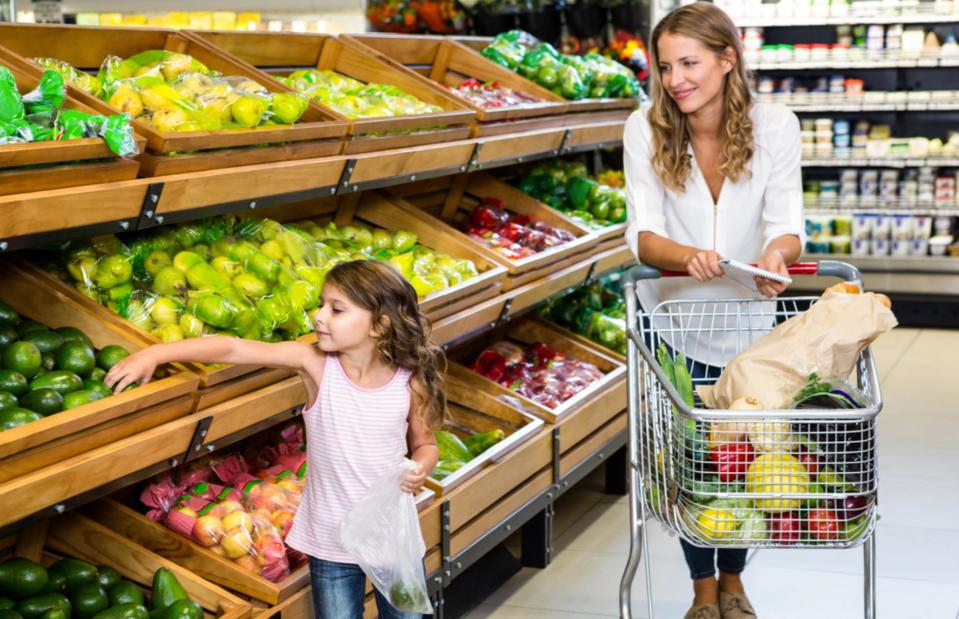
wavebreakmedia/Shutterstock
Fruit and vegetables are often placed near the front of grocery stores, and for good reason. The sensory impact of fresh fruit, vegetables, and often flowers – think bright colours and fresh smells – is thought to put us in a good mood and make us hungry. What’s more, this placement may actually make us spend more: in an experiment at a campus grocery store in Warwick University in the UK, researchers found that sales increased by 15% when fruit and vegetables were placed at the front of the store.
Essentials at the back...
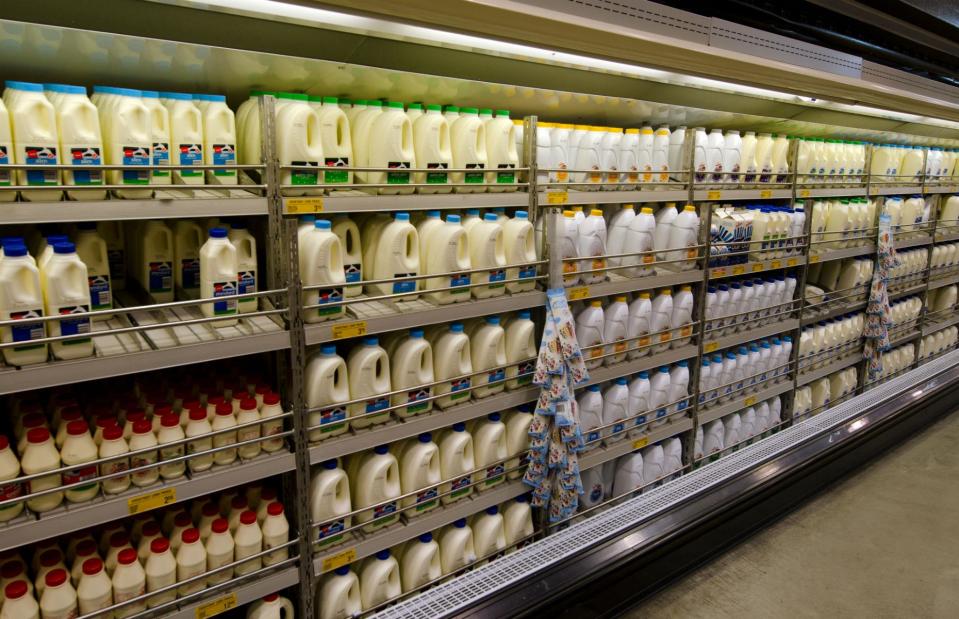
ChameleonsEye/Shutterstock
Staples like bread, milk and eggs often find themselves tucked away in the back corner of a store, so you end up weaving through several aisles of chocolate, snacks, ready meals or tinned food to reach the bread. It’s not just a coincidence – grocery stores want to expose you to the maximum amount of products, even if you’re just quickly popping in, so you impulse buy other things.
...except freshly-baked bread

FotograFFF/Shutterstock
The only exception to the rule is freshly-baked bread, along with other bakery counter items like pastries and cakes. Often, the bakery counter is placed near the entrance, which works in a similar way to the placement of fruit and vegetables. The smell of freshly-baked bread makes you hungry, and any plans to buy that cheap pre-sliced loaf will probably go out the window when you get a whiff of the fresh stuff.
Bigger trolleys

pixfly/Shutterstock
Just in the same way that eating from a larger plate makes you eat more, shopping with a larger trolley makes you buy more stuff that you probably don’t need. That’s because we’re wired to want to fill empty spaces. According to a US study, when retailers doubled the size of their trolleys, shoppers bought on average 20% more without noticing it.
Free food

Tyler Olson/Shutterstock
Who doesn’t love free food? Giving out free samples is one of the oldest tricks in the marketing book, and it works. According to a study by food manufacturer Snack Factory, sampling resulted in a conversion rate of between 25% and 30%, meaning that at least a quarter of customers who tried products ended up buying them. That’s because samples give us a specific desire for something, leaving us with a reminder of what we’ve just tasted and increasing our craving.
Food at the till
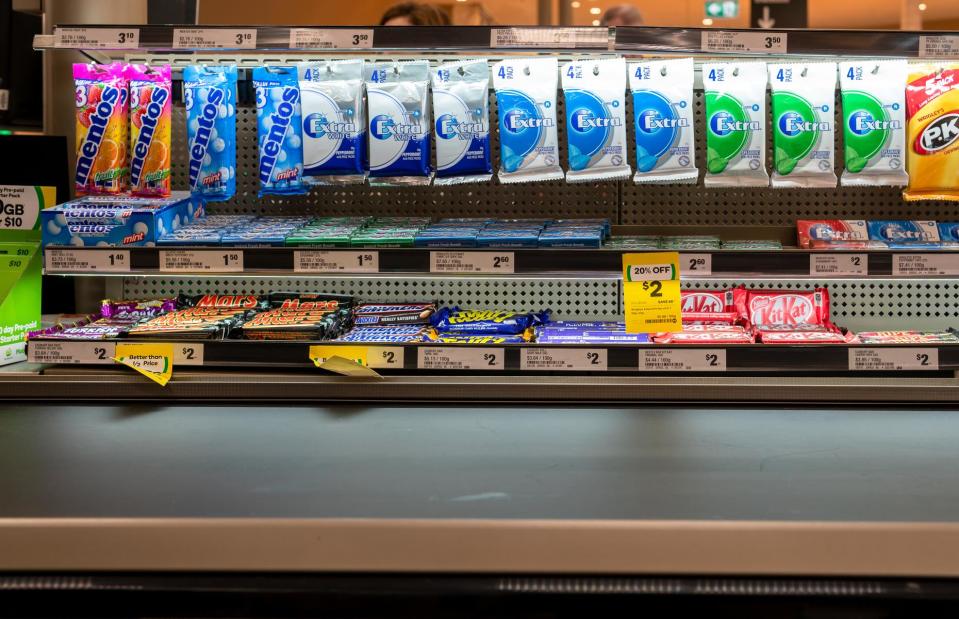
anystock/Shutterstock
Despite having scoured the store for everything you need, it's all too easy to impulse buy when you get near the till. Our habits of buying treats at the checkout have been attributed to the ‘denomination effect’. This theory, research has shown, says people are less likely to break into a high-value note for a small purchase. However, put this low-price treat next to a place where you already have a mound of shopping and you’re more likely to just throw it on the pile.
Store layout changes
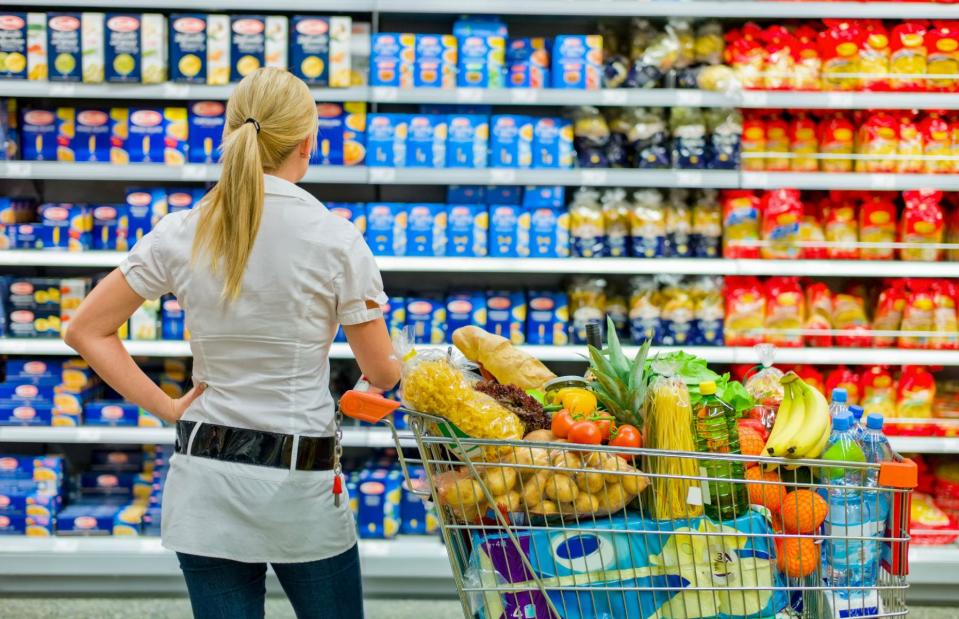
Lisa S./Shutterstock
Seemingly overnight, the cheese moves from aisle 2 to aisle 10 and then tinned sweetcorn ends up in aisle 20. Shops know that you go into the supermarket to purchase foods you like to eat and are likely to know where they are after a handful of trips. Entering a store, going straight to the product, and whizzing through the self-checkout isn’t encouraging you to buy more. Moving your favourite item around, leaving you to roam around searching for it, is more likely to result in extra purchases.
Eye level is buy level
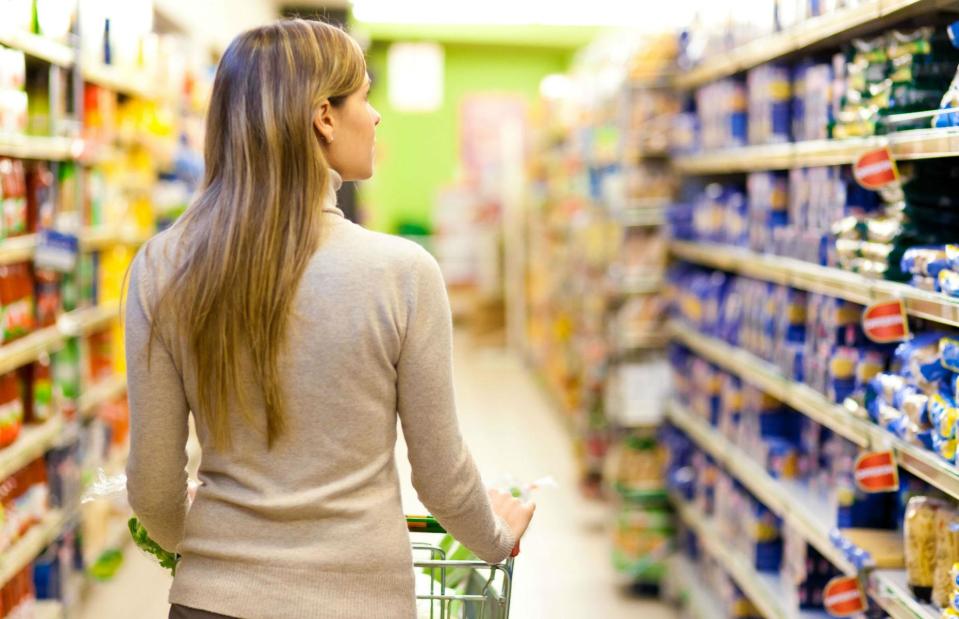
Minerva Studio/Shutterstock
Most supermarket shoppers want to spend as little time and money as possible. Yet clever marketers take advantage of our haste and place the most expensive products at eye level, often encouraging us to spend more without us realising it – hence the phrase ‘eye level is buy level’. According to a study published in Store Design and Visual Merchandising, products placed at eye level (around four to five feet off the ground) receive 35% more attention than those on lower shelves.
…and the same goes for kids
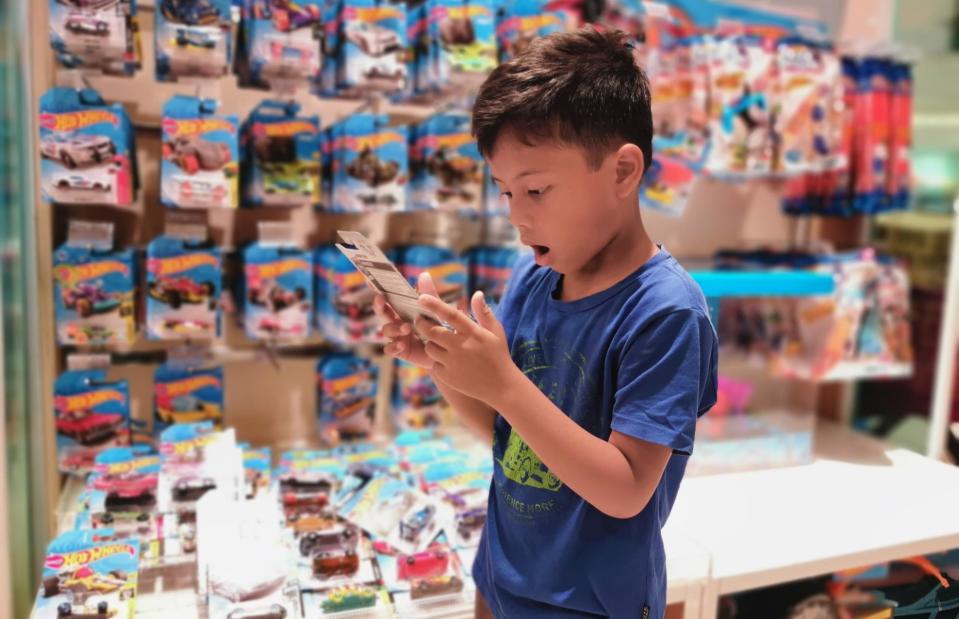
Laboo Studio/Shutterstock
The ‘eye level is buy level’ rule doesn’t only apply to adults. In a study of cereal aisles by the Cornell Food and Brand Lab, it was revealed that cereals targeting children are placed on average 23 inches off the ground, while those aimed at adults are placed 48 inches off the ground. The same goes for other products aimed at children like sweets, chocolates, character-themed foods and toys.
Loyalty cards
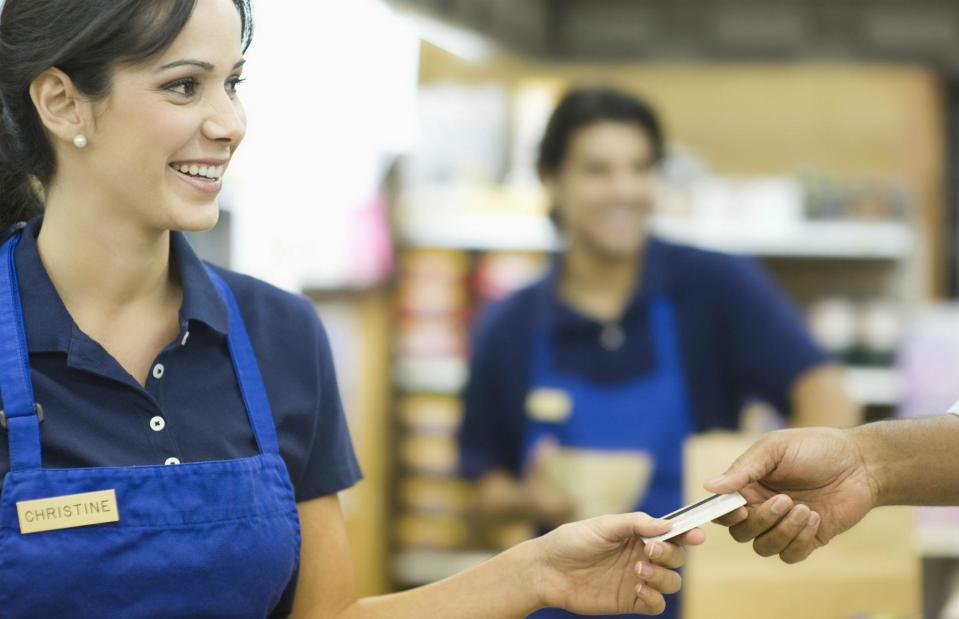
sirtravelalot/Shutterstock
Loyalty cards might rack up savings eventually but exercise caution. Using a loyalty card also allows stores to learn about your shopping habits, which often results in them sending you vouchers for extra points or money off those products, luring you into returning. According to a report by marketing firm Bond Brand Loyalty, 66% of customers modify the amount they spend to rack up points, and loyalty scheme members spend 5-10% more than non-loyalty scheme customers.
Accessories are well signposted
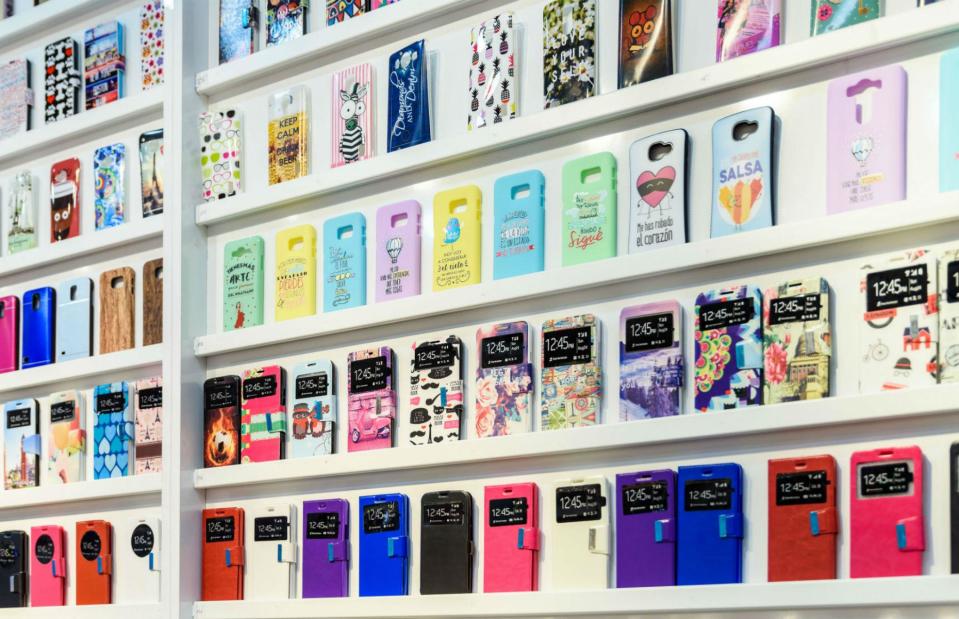
Radu Bercan/Shutterstock
Protective covers are hung behind the display of expensive products in Apple stores while batteries are at the checkouts and aisle corners of toy stores. Having add-ons directly next to the product increases the chance of you buying it to gather everything in one transaction without shopping around.
Bold sale signs
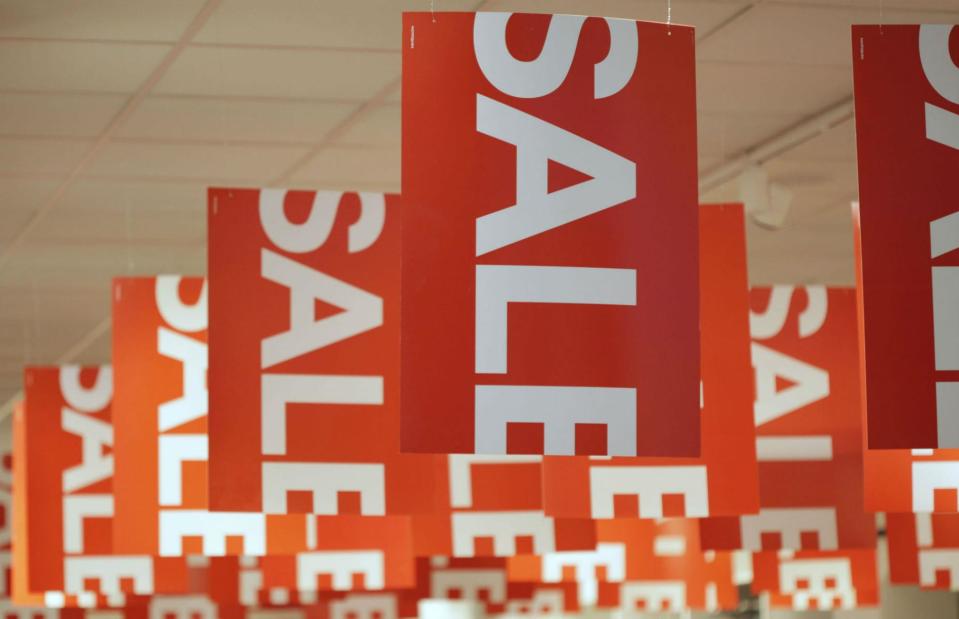
Andrey Cherepanov/Shutterstock
Ever bought something in the sale that you’ve ended up regretting? Firstly, stores use massive ‘SALE!’ signs in the windows to attract your attention and make you a walk in – ever noticed how they’re usually red, a colour that’s proven to generate a quick reaction? Next, signs above food aisles or racks of clothing draw your attention to them, even if you wouldn’t have been interested in them. Lastly, advertising the timescale of the sale urges you to buy something before it’s too late.
Offering free shipping/delivery

Jeramey Lende/Shutterstock
When you’re shopping online, delivery ‘deals’ can make you spend more. Many sites, such as Amazon (without Prime), and many clothing websites, offer free delivery if you spend a certain amount – making you add extra items to qualify. Research suggests that making up orders to the qualifying amount is our brain’s way of rationalising the act of buying something online rather than going out to a store to get it.
Strategic escalator placement
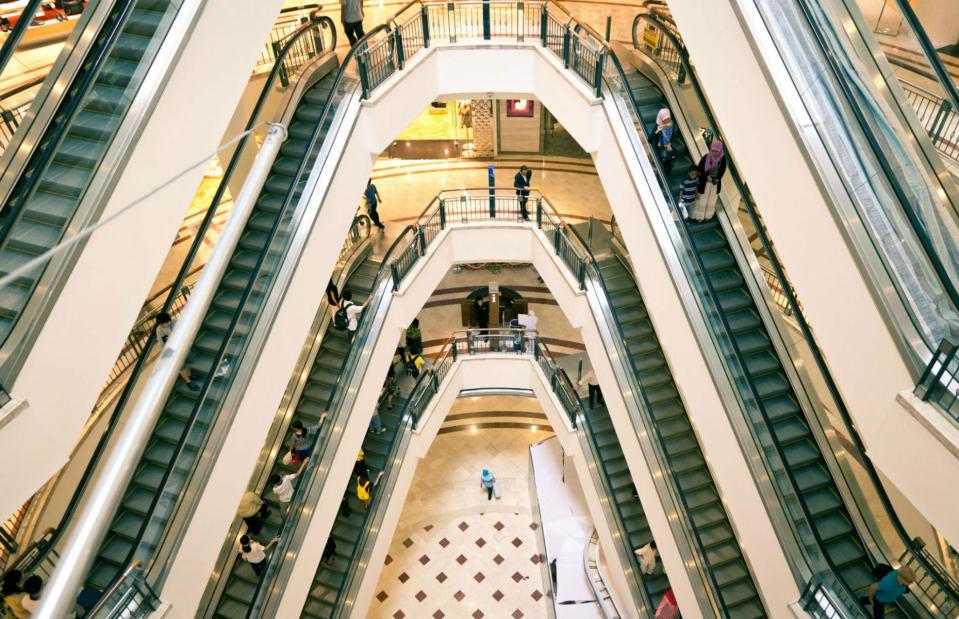
Elena Ermakova/Shutterstock
Ever tried to go up to the next floor in a store, only to discover you’ve got to go all the way to the back? It’s no coincidence. Placement of escalators is designed to make you walk through as much of the store as possible, so you’re more likely to buy something else on the way. In shopping malls, escalators are part of a broader ‘map’ of ‘shopping traffic’ designed to make us go round and round it and spend as much time there as possible.
Seats facing stores
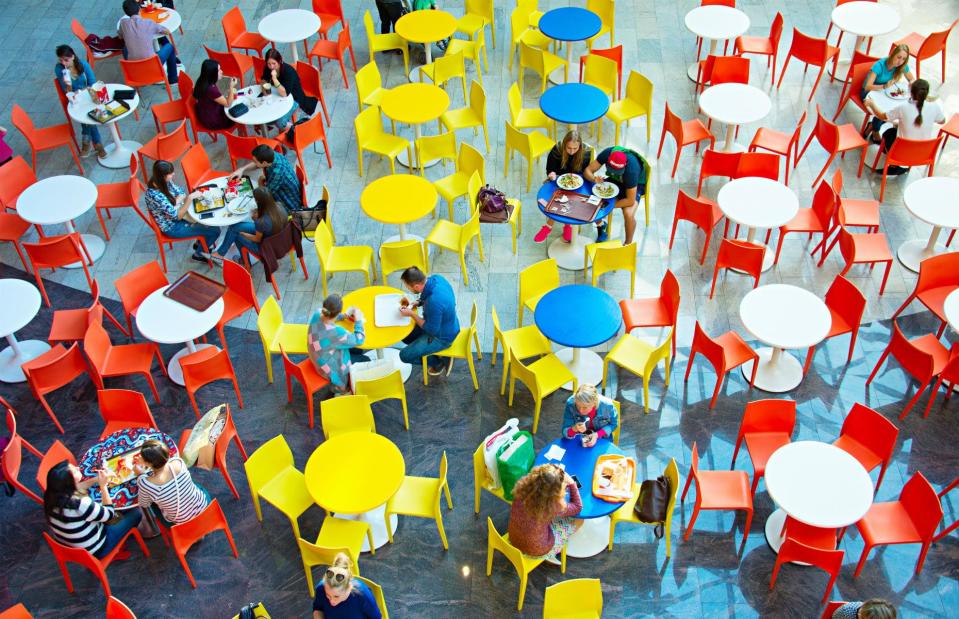
joyfull/Shutterstock
Stores and supermarkets often have seating for shoppers to rest but seats are always facing products so you are constantly being exposed to new products and thinking about shopping even when sitting down. Meanwhile, food courts are usually in the middle of the shopping mall surrounded by popular stores, and restaurants on upper levels have seating overlooking the stores.
End cap displays
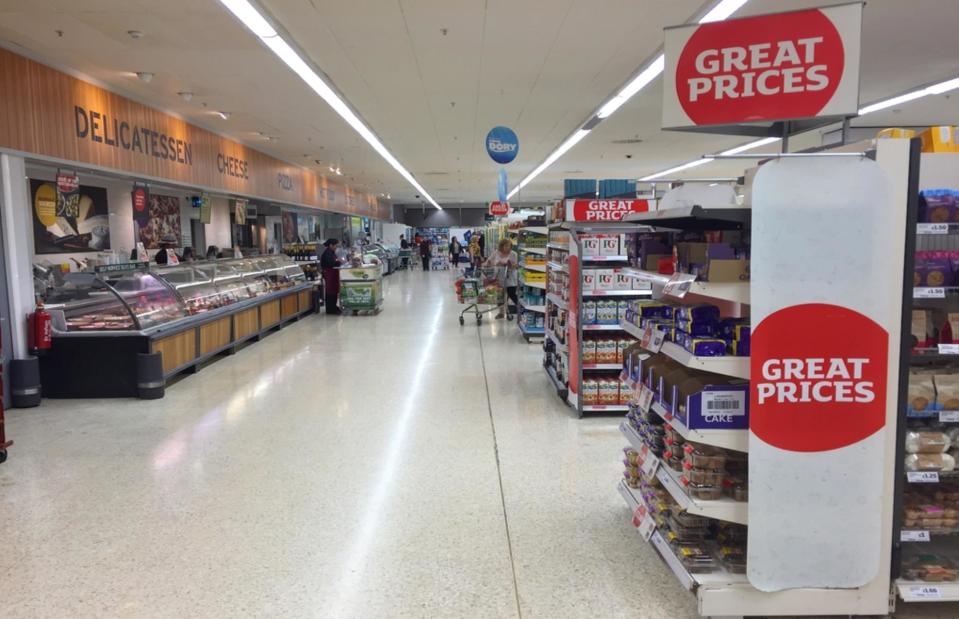
photocritical/Shutterstock
An ‘end cap’ is the name given to the big displays at the end of aisles. They attract your attention because they're bigger than normal displays, very visible when you're browsing between aisles, plus they make you think that a product is on offer, even if that's not always the case. They're definitely effective: according to research by the US-based National Retail Hardware Association, a product placed on an end cap display sells eight times faster than the same product placed elsewhere on the aisle.
Pairing items

1000 Words/Shutterstock
It’s no coincidence that the tortilla chips are always placed next to salsa. Pairing items which go well together – whether that’s chips with dips in the supermarket or running shoes with sports socks in the sportswear store – is a technique known as ‘cross-selling’, designed to make you spend more. It happens online too: sites suggest similar products to make you buy things you might not have done. Amazon reportedly makes a massive 35% of its sales from the technique.
Touching the products
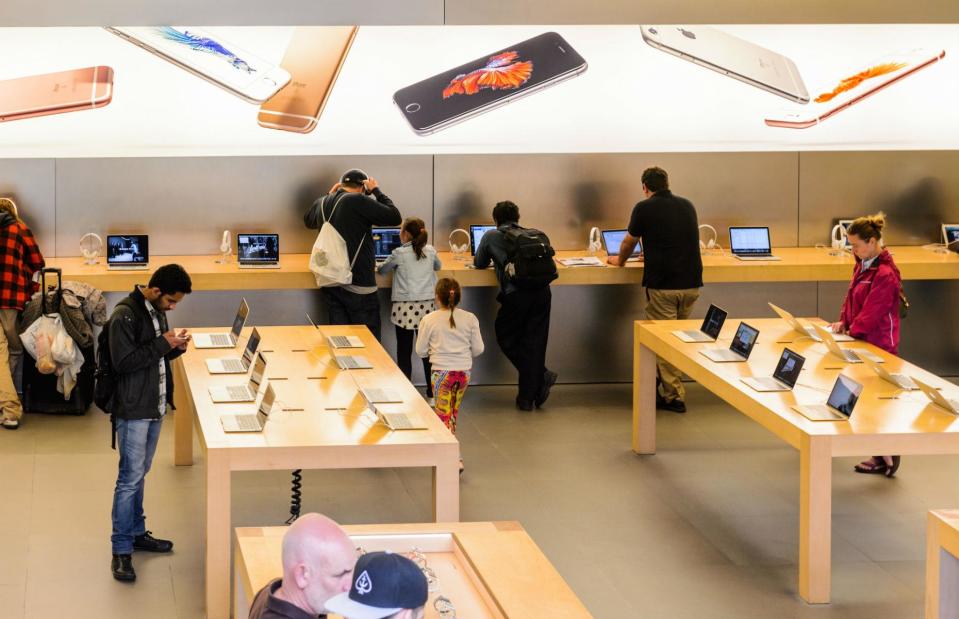
Anton_Ivanov/Shutterstock
Researchers have found that touching products in store gives us a sense of ownership over items, making us more likely to buy them. What’s more, the longer we hold items for, the higher price we’re willing to pay. According to a study by Ohio State University, participants who held a mug for 30 seconds were willing to pay on average $1.47 more than those who held the same mug for 10 seconds. In tech stores like the Apple stores, trying before buying is crucial and they’re laid out accordingly.
Staff befriending you
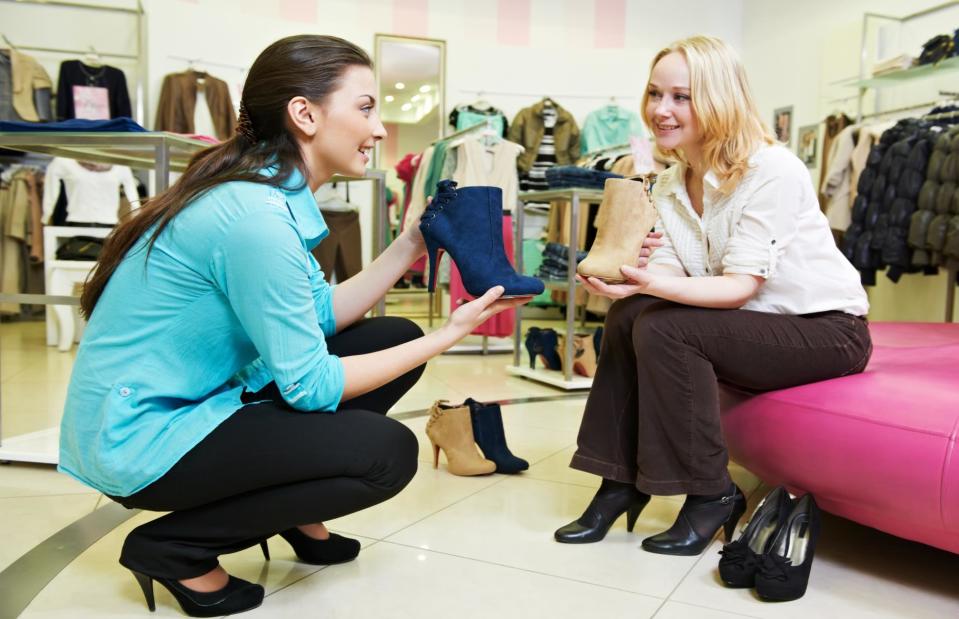
Dmitry Kalinovsky/Shutterstock
Friendly customer service is a sure-fire way to get customers to spend more. According to an American Express survey of nine countries, Americans were willing to spend an average of 13% more with companies they felt provided excellent customer service, while Australians were happy to spend 12% more, Brits were happy to spend 10% more, and Germans were happy to spend 8% more. Store assistants often drive extra purchases by upselling products and recommending other items.
Premeditating store traffic
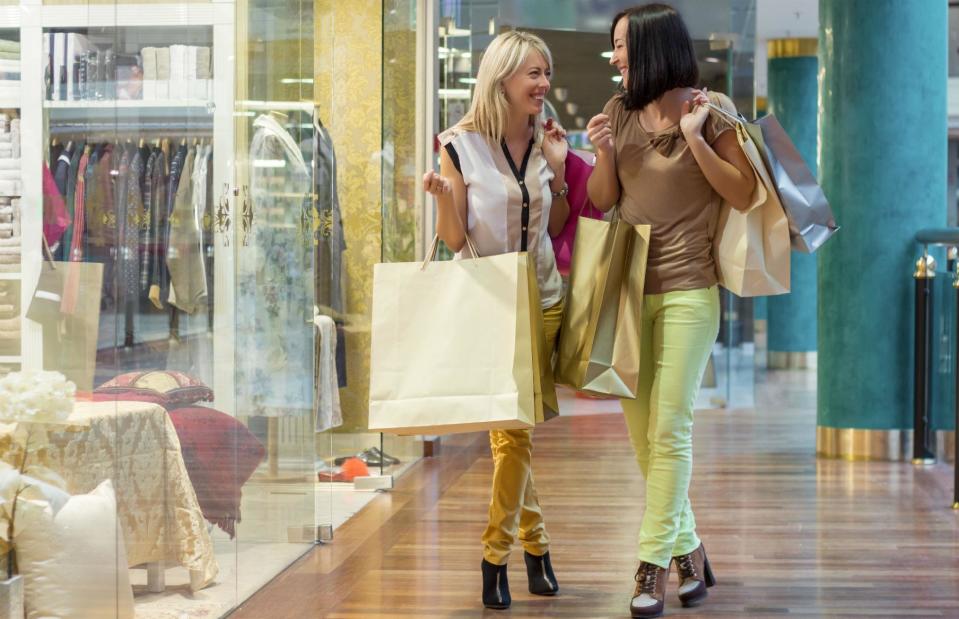
Kaspars Grinvalds/Shutterstock
Think you’re just walking around stores however you please? Think again. Research suggests that 90% of shoppers in North America will go to the right side of the store when they walk in, which consumer psychologists have linked to right-handedness. Clever stores have clocked onto this and place most high-value items on the right wall. Marketing professor Dr Paul Harrison found that shoppers travelling anti-clockwise spent, on average, $2 (£1.50) more than those going clockwise.
'Deals' that make you buy more
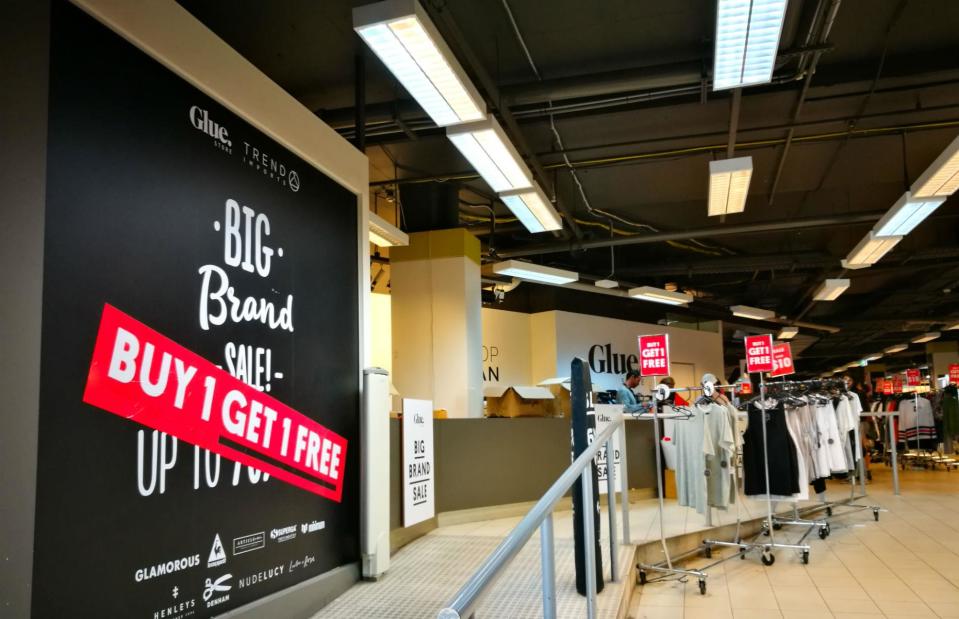
ArliftAtoz2205/Shutterstock
It’s hard to ignore a great deal, but exercise caution – most offers are just engineered to make you buy more. The popular Buy One Get One Free (BOGOF) offer is used by stores to shift products they’re trying to get rid of, which were often overpriced originally: think big boxes of chocolates at Christmas and sharing packs of snacks. Items on BOGOF don’t tend to have a long shelf life too, so they’re only worth buying if you can actually use them up.
Clever lighting

fiphoto/Shutterstock
The right lighting can make or break a store. In luxury clothing stores and lingerie stores, dimmer lighting is used, as it's associated with relaxation and makes shoppers slow down and spend more time there. Conversely, in budget stores bright light encourages shoppers to think quickly, often leading to impulse purchases. In clothing store changing rooms, dimmer light is often used to make clothes look more flattering on and increase the chance of a purchase.
Ending prices with 9s
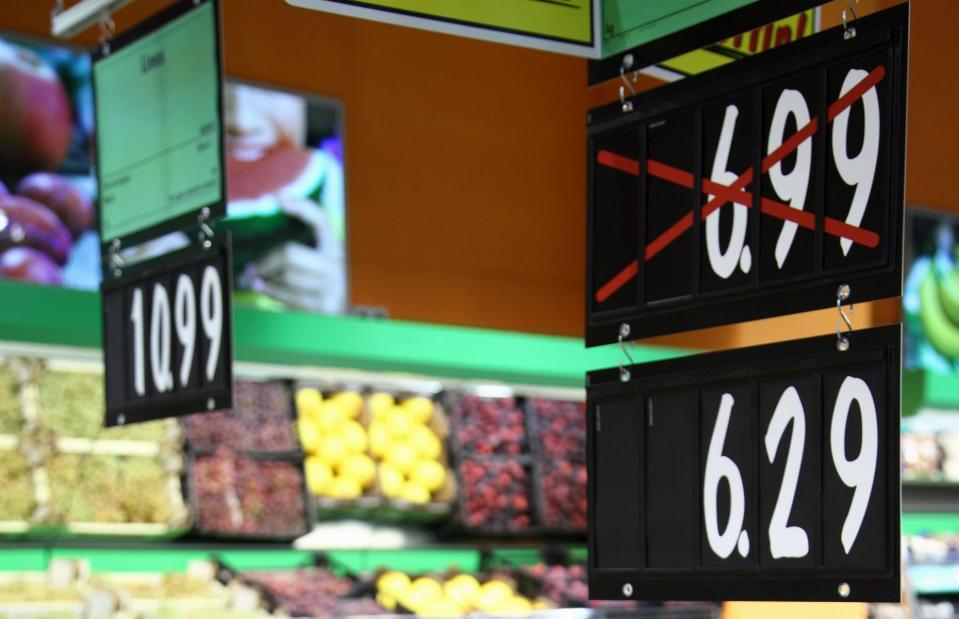
GSerban/Shutterstock
‘Charm prices’ end in 9s and are a tactic used by shops because of what is known as ‘the left digit effect’. Simply put, the theory dictates that minds focus on the first left digit – before the decimal point – and we perceive the product to be a different price than it actually is, and often end up rounding the price down. Research published in Priceless, by the aptly-named William Poundstone, shows that use of charm pricing on average increased sales by 24% compared with 'rounded' prices.